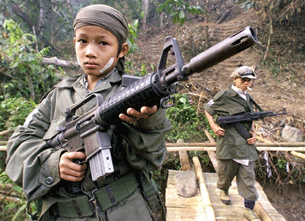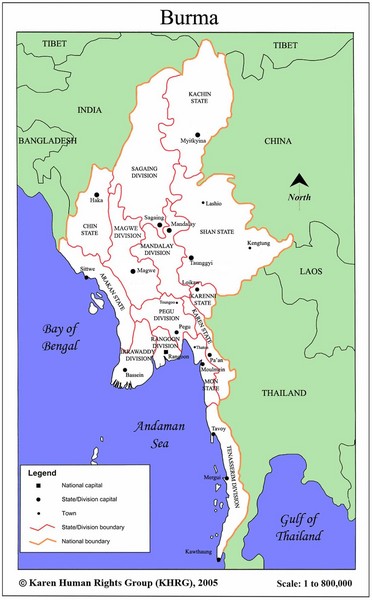Project: AK-47 is committed to reclaiming children from armed conflict, wherever they may be. In one sense, a child soldier is a child soldier, but we wanted to take the opportunity to highlight the differences between the countries we work in. It may seem obvious, but a child soldier in Burma does not have the same experience as a child in the Philippines. Like the rest of us, these children are in large part defined by their cultures. This child is an individual, a product of his context—for better or worse—and it is our goal to work within this culture to restore the child to a life free from violence.
Today we give you an intro to Burma, encyclopedia style.
Official Languages: Burmese (though many local, tribal languages)
Religion: 89% Buddhist, 4% Christian, 4% Muslim
Capital: Rangoon
Government structure: “nominal civilian parliamentary government” (as of 2011)
President: Thein Sein
Independence: Ruled by Britain as a province of India until 1937 then achieved full independence in 1948.
Population: 53,999,804 (24th in the world)
Internet users: 110,000
Literacy rate: 89%
Average years of school: 9 years
Urban population: 34%
Amount of population without access to clean water: 29%
Population below poverty line: 32.7% (2006)
Internally Displaced Persons (IDPs): 503,000 (a result of “government offensives against ethnic insurgent groups near the eastern border.”)
People living with HIV/AIDS: 240,000 (24th in the world)
Since 1989, the Burmese have adopted Myanmar as their nation’s conventional title. The U.S. has not adopted it.
Learn more facts about the Philippines at CIA World Fact Book
Find out more about Project: AK-47’s work in Burma
In the coming weeks we’ll post more insights about Burmese life.



